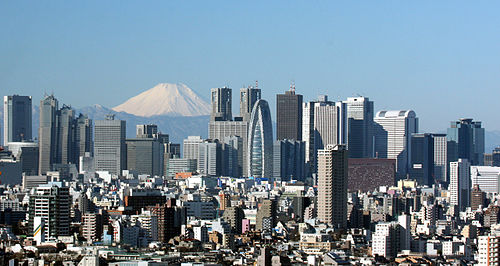by Larry
September, 2012MegacitiesKurt Vonnegut, Jr., famously suggested that sooner or later we shall bioengineer ourselves smaller and smaller, and so keep expanding numerically even if becoming microscopic in the process. From my outlook as a legroom and wide open spaces loving guy, we have already moved too far in the wrong direction. Megacities, however, are the latest logical extension of a tendency to cluster into ever greater collections of ourselves. Megacity Manila now averages 111,000 people for every square mile. In megacity Tokyo, there are 35 million of us. The top ten megacities by population (Tokyo through Karachi in the listing below) average just under 25,000,000 each. Only the top 6 megacities together account for 159 million of us, more than half the U.S. population. In 15-20 years, the number of such megacities (population centers of at least 10,000,000) is projected to be about 40-50. There are already over two dozen of them, a number expected to continue to rise by leaps and bounds as urbanization takes hold in Third World countries. In order of population, largest first, these current super-cities are:
Manila shows us that people may exist much more closely packed than we typically imagine. Were New York City (which covers an area of roughly 500 square miles) today as dense as Manila, about 50 million Homo sapiens would live there. Imagine a world, of perhaps the year 2100, in which most megacities are at least that dense, and you may see how there could one day be many, many more of us than are around today. Among nations with a large census, China, rushing to build the infrastructure for numerous huge new population centers, is probably the most ambitious. By 2017, five years hence, its plan is to create a vast megalopolis of 42 million inhabitants in the Pearl River Delta district. This may be only the beginning. Not shy about securing its interests, that nation's 20-year building explosion calls for a mean construction of over 1000 skyscrapers a year, like adding one New York City every twenty-four months, to accommodate its rising flood of urban dwellers. China is also hurrying to lock in access to global supplies of steel and other materials needed for that kind of boom. While the potential is impressive for business and economic stimulus from such regional or global growth projections, so are the probable challenges.
Meanwhile, as in the old Chinese curse, we now live in interesting times. It will be fascinating to see how such tests or dilemmas are resolved in the years ahead. I have so far been looking at the growing trend toward more and larger megacities with a jaundiced eye. Perhaps, though, in the "brave new world" toward which we are bullet-train-speeding, more numerous and bigger cities simply make sense and so might be seen at least as accurately from an optimistic perspective. After all, just as bee, ant, or termite colonies can function far more efficiently than if the same number of individuals were spread over relatively large areas, there are many synergies possible among humans who live in swarms. Maybe I should try it. I might like it. Certainly many folks who live in The Big Apple feel they are in the best of all possible places and find great personal reward in thus being "megacitizens." |
